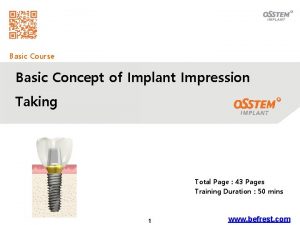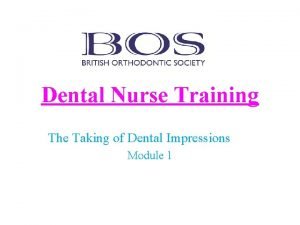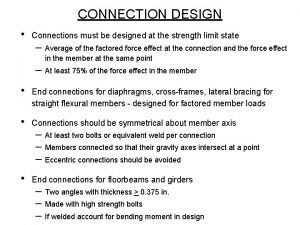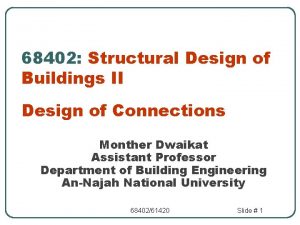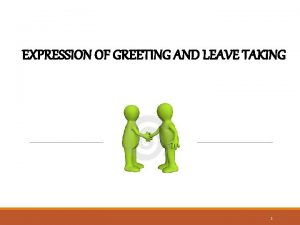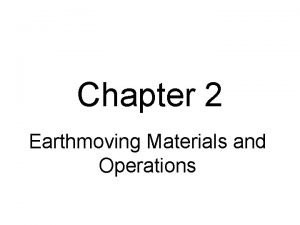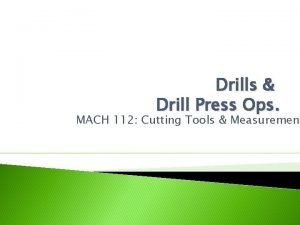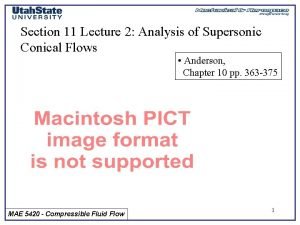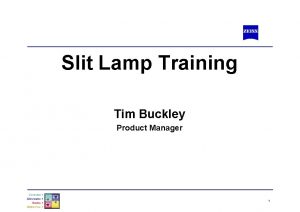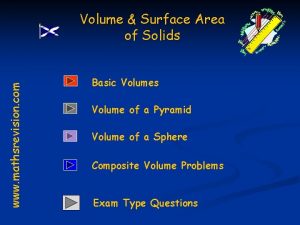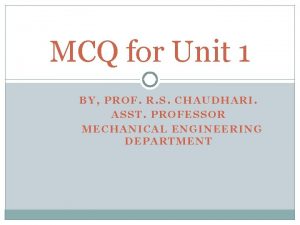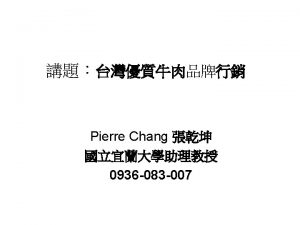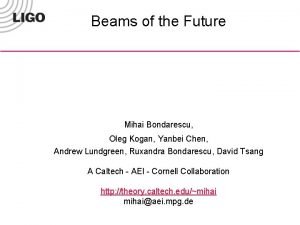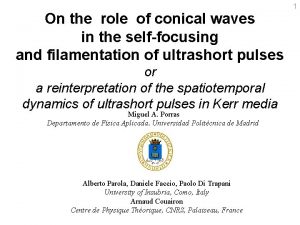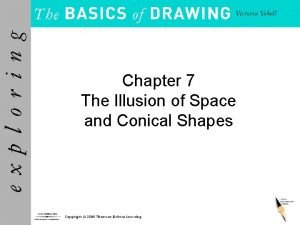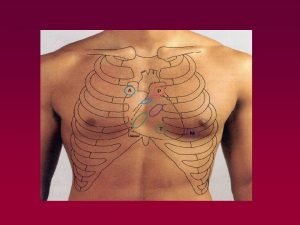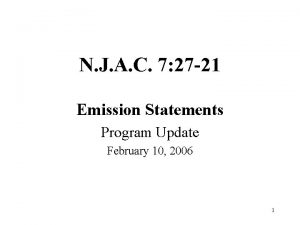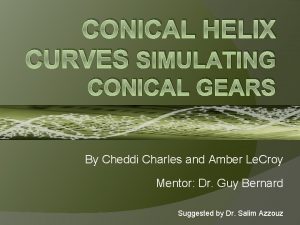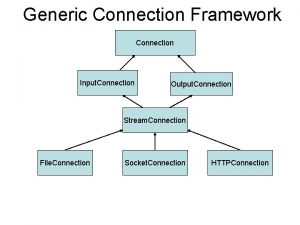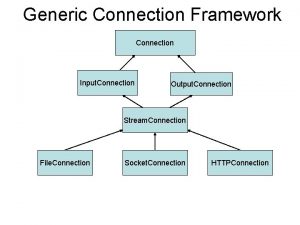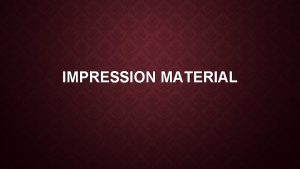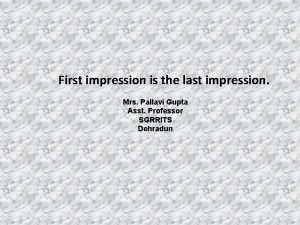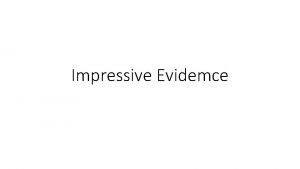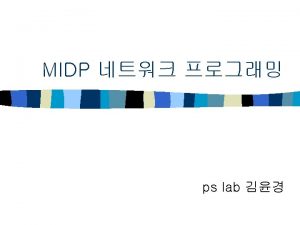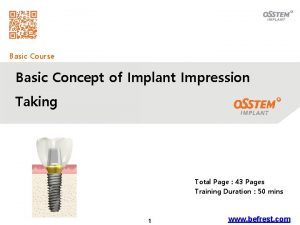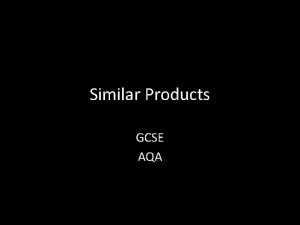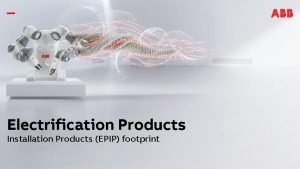Impression taking on Conical Connection Disclaimer Some products


































- Slides: 34

Impression taking on Conical Connection Disclaimer: Some products may not be regulatory cleared/released for sale in all markets. Please contact the local Nobel Biocare sales office for current product assortment and availability. Nobel Biocare, the Nobel Biocare logotype and all other trademarks are, if nothing else is stated or is evident from the context in a certain case, trademarks of Nobel Biocare.

Influencing parameters & decisions to be taken When taking impressions, consider the different parameters which might have an influence on the impression taking procedure like technique and components: • Tissue-level or bone-level implant • Connection type (external hex, internal tri-channel, internal conical) • Implant-level or abutment-level impression • Single unit or multiple units • Abutment-level / abutment type: Snappy, Multi-unit, other • Open-tray and closed-tray procedures • Soft tissue condition / emergence profile • Impression material • Standard or individual impression tray

Impression material & procedures • Usually elastomeric impression materials are materials of choice (addition reaction silicone, polyether) • A standard impression tray can be used (for open tray procedure drill holes in the tray at the planned positions of the impression coping) • An individualized impression tray is recommended to better fit the anatomy of the patient and for difficult anatomical situations • Closed tray and pick up techniques are applicable for ‘small/easy‘ cases (e. g. single units) • Open tray techniques are recommended for larger restorations (e. g. bridges)

Purpose of the impression Transfer information about one or more implants to a working model

Implant replica Identical Internal conical connection Implant replica for dental laboratory model, mimicking the implant interface

Impression procedures - options Implant-level • Closed tray • Open tray Abutment-level • Closed tray • Version: Pick up with impression coping • Open tray

Impression copings Open tray Impression Coping Open Tray Stays in impression Closed tray Impression Coping Closed Tray Stays on implant (will be repositioned in impression after removal of impression tray)

Impression copings Carefully chose the right impression coping! „B“ for Bridge (multiple units) non-engaging part Impression coping for single units Impression coping for multiple units

Impression procedure options 1. Implant-level 2. Abutment-level

Impression procedure options 1. Implant-level

Closed tray technique Impression Coping Closed Tray Insertion of Impression Coping Closed Tray in implant

Closed tray technique Impression taking Fill interface at the head of the screw with suitable material

Closed tray technique Removal of the impression coping from implant and mounting of implant replica

Closed tray technique Carefully reposition the impression coping in the impression tray – look out for the specific indentation on the impression coping

Open-tray technique Impression Coping Open Tray Screw impression copings on implant

Open-tray technique Impression taking Impression tray has been prepared with holes for the impression coping Unscrew impression copings from implant, remove impression tray

Open-tray technique Screw implant replica to impression copings and pour model

Impression procedure options 1. Implant-level 2. Abutment-level

Abutment-level impression technique 2. Abutment-level

Closed tray - pick-up technique - Snappy™ Abutment • For single and multiple-unit cementretained restorations in the posterior region • Available in two abutment heights (4 and 5. 5 mm) and two collar heights* • Predictable and accurate seating with audible „snap“ • Laser marking on abutment ensures fast and accurate identification • One package includes everything needed: abutment and screw, impression coping, healing cap and temporary coping engaging * Collar heights differ depending on implant type and platform size

Closed tray - pick-up technique - Snappy™ Abutment Steps overview Seat abutment and tighten screw

Closed tray - pick-up technique - Snappy™ Abutment Steps overview Snap impression coping on abutment Inject impression material around coping and seat filled impression tray

Closed tray - pick-up technique - Snappy™ Abutment Clinical case

Closed tray - pick-up technique - Snappy™ Abutment Snappy Abutment Replica Abutment replica NP Abutment replica RP Abutment replica WP The abutment replica are also available in two different heights (4 mm and 5. 5 mm) Abutment replica 6. 0

Closed tray - pick-up technique - Snappy™ Abutment Master model fabrication

Closed tray - pick-up technique - Snappy™ Abutment Healing Abutment, Snappy Abutment

Closed tray - pick-up technique - Snappy™ Abutment Snappy Abutment Impression Coping - orientation When placing the impression coping on the Snappy abutment, the indentation on the abutment is aligned with the marking on the impression coping.

Closed tray - pick-up technique - Snappy™ Abutment Snappy Abutment Impression Coping – ‚pick-up‘ in impression

Closed tray - pick-up technique - Snappy™ Abutment Snappy Abutment with healing cap

Closed tray - pick-up technique - Snappy™ Abutment Final crown restoration

Multi-unit Abutment • Screw-retained restoration • Partially edentulous or edentulous cases • Impression procedure on abutment level Multi-unit Abutment straight Multi-unit Abutment angled, 17° Multi-unit Abutment straight (with handle for seating) Multi-unit Abutment seating with handle

Multi-unit Abutment – open tray technique Placement of MUA with handle, removal of handle Apply torque on abutments (straight: 35 Ncm, angulated: 15 Ncm) Impression, unscrew and pickup of Impression Copings Placement of implant replicas MUA Impression Coping Open Tray Syringe impression material around impression copings Master model

Multi-unit Abutment – closed tray technique Placement of MUA with handle, removal of handle Impression, removal of impression tray and removal of copings from implants Apply torque on abutments (straight: 35 Ncm, angulated: 15 Ncm) Impression Coping Closed Tray Reposition impression coping into impression Placement of implant replicas Syringe impression material around Impression Copings Master model

The step after impression taking - provisionalization Provisionalization options on conical connection Temporary solutions Temporization on final abutment Screw-retained Multi-unit Abutment (straight, 17º or 30º) Temporary abutments Cement-retained Procera Esthetic Abutment Screw-retained Temporary Abutment titanium Cement-retained Immediate Temporary Abutment (single unit) Snappy Abutment Temporary MU Abutment Plastic* Esthetic Abutment (straight or angled) * Temporary abutments plastic are indicated for max. 3 months intraoral use Quick. Temp Abutment (multiple units)
 Impression taking course
Impression taking course Dental impression taking course
Dental impression taking course Text to text connections examples
Text to text connections examples Bolted connection
Bolted connection A490n bolts
A490n bolts Slip critical connection vs bearing connection
Slip critical connection vs bearing connection Write some expressions of leave taking and the responses
Write some expressions of leave taking and the responses Functional vs innovative products examples
Functional vs innovative products examples Marketing mix of pepsi and coca cola
Marketing mix of pepsi and coca cola Triangular spoil bank
Triangular spoil bank Besly cutting tools
Besly cutting tools Lotus flower vase egypt
Lotus flower vase egypt Conical flow
Conical flow Water runs into a conical tank at the rate of 9
Water runs into a conical tank at the rate of 9 Slit lamp training
Slit lamp training Pontic abutment
Pontic abutment Formula in finding the volume of a cone
Formula in finding the volume of a cone Kudlung instrument
Kudlung instrument This is a conical shaped recess around a hole
This is a conical shaped recess around a hole Erlenmeyer dlask
Erlenmeyer dlask In case of flat pivot bearing the rubbing velocity is
In case of flat pivot bearing the rubbing velocity is Beef conical muscle 中文
Beef conical muscle 中文 Conical beam
Conical beam Conical wave
Conical wave Sequential lobing tracking radar
Sequential lobing tracking radar Illusion of space in drawing
Illusion of space in drawing Conical breast shape
Conical breast shape Fibroserous
Fibroserous Zero voc conical
Zero voc conical Saddle pontic
Saddle pontic Pia mater
Pia mater Contact vs noncontact forces
Contact vs noncontact forces They say sometimes you win some
They say sometimes you win some Fire and ice diamante poem
Fire and ice diamante poem They say it only takes a little faith to move a mountain
They say it only takes a little faith to move a mountain
